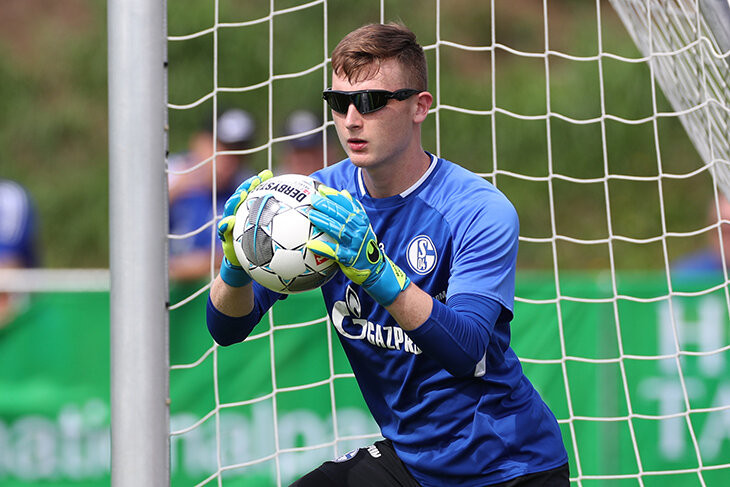Futuristic workouts.
Innovative technology is making its way into football. For example, in Mainz, goalkeeping training looks special: this is how Robin Zentner prepares for the season's resumption at the training camp in Marbella.
And what are the specific advantages of points?
In short, these goggles block the athlete's vision for short periods, make the brain anticipate, and lead to hypersensitive perception. This helps to improve hand-eye coordination - for goalkeepers, for example, it can help with reaction to difficult shots.
-Manufacturers of such glasses promise that after only five minutes of training in stroboscopic glasses, the game will seem slower for the athlete and will allow him to react faster - including to blows because it will appear that they are slower than usual.
-The brain begins to divide the received information into relevant and irrelevant and ignore distractions. Players wearing stroboscopic glasses see the ball more clearly and react faster to changing situations.
-Athletes begin to receive more information through the muscles and nerves, as the brain blocks irrelevant visual information. In this way, a person gains renewed balance and understanding of the body: glasses manufacturers call this the most challenging skill to master.
-Another benefit is that athletes don't have to worry about performance. It just seems that this does not play a significant role - such anxiety seriously interferes with focusing and concentrating on your business. One of the consequences of training with stroboscopic glasses is that the athlete begins to feel calmer and more focused.
-The glasses have four training modes: two open eyes, only the left or only the right, and alternating eyes. In them, the brain learns to receive complete information even with one eye and contributes to developing the correct balance of the eyes to increase the information obtained through the eyes.
-Glasses can work with the eyes and use occlusion when the lenses are blurred and certain visual information is blocked. The level of occlusion can be increased, and the complexity and duration depend on the level of mastery of the skill.
"The glasses stimulate brain activity and improve vision due to the intermittent shutter," describes the product of the Japanese company VisionUp. "This makes it easy to improve the speed of brain processes and visual abilities: kinetic visual acuity, dynamic visual acuity, peripheral vision, depth perception, hand-eye coordination, and so on."
In 2020, a scientific article was published on the effect of stroboscopic glasses on eye-hand coordination.
At the same time, stroboscopic glasses should be worn sparingly. They are recommended to be used for a maximum of 15 minutes every two to three days - and no more than three months in a row. And then you need a pause; otherwise, the effect may be harmful.

Has anyone already done this?
Goalkeeping coaches periodically resort to such methods - for example, Schalke used the system almost seven years ago. These glasses cost about 500 euros. Axel Busenkell, head of the rehabilitation department, has also worked in neuroscience for a long time and gives Mainz players exercises related to brain neurons.
In the Swiss national team, stroboscopic glasses have a stable history - they were worn by Diego Benaglio 10 years ago and are used during every tournament. That may be why Jan Sommer is so excellent.
ManCity has been using strobe goggles since the 2014/15 pre-season in Scotland. And they were also mastered in the Russian national team. Igor Akinfeev is not against new technologies.
Athletes from other sports also use such glasses as basketball player Steph Curry.
Michael Jordan secretly used stroboscopic technology to improve his game.
This is Greg Jennings from the NFL.
Even African skiers use stroboscopic glasses!
Modern problems require modern solutions. The integration of innovative technologies into sports is in full swing.
17.01.2023





